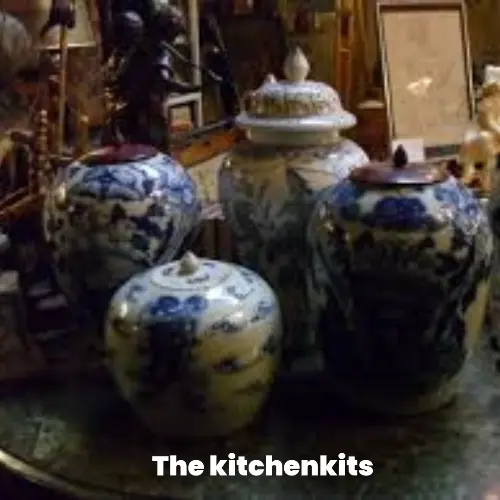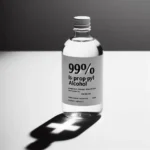Table of Contents
Is Porcelain Microwave Safe
Microwaving food is a convenient and fast way to prepare meals, but it is essential to consider the safety of the cookware used in the microwave. Porcelain is a type of ceramic often used in dishware and kitchen appliances, but is it safe to microwave porcelain?
The answer to whether porcelain is microwave-safe is not straightforward. It depends on several factors, including the markings on the porcelain, the type of porcelain, the glaze and decorations, the quality of the porcelain, and its age
In this article, we will explore the safety of using porcelain in the microwave and provide tips for safe microwaving practices.
What is Porcelain?
Porcelain is a type of ceramic material made by heating clay and other materials in a kiln. The resulting material is durable, strong, and often used in dishware and kitchen appliances. Porcelain is known for its smooth, glossy surface and can be decorated with various patterns and designs.
Understanding Microwave Safety:
Microwaves work by emitting electromagnetic waves that heat up the water molecules in food, causing it to cook quickly. However, not all materials can withstand the heat and radiation generated by microwaves, and some materials can release harmful chemicals into the food when exposed to high temperatures.
Is Porcelain Microwave Safe?
The answer to whether porcelain is microwave-safe is not straightforward. It depends on several factors, including the markings on the porcelain, the type of porcelain, the glaze and decorations, the quality of the porcelain, and its age.
PAA Markings: Porcelain that is microwave safe should have a “microwave safe” or “microwave oven safe” label on it. Another indication of microwave safety is the PAA (Professional Association for Austria) marking, which indicates that the porcelain has been tested and found to be safe for use in the microwave.
Porcelain Types: There are various types of porcelain, and some are microwave safe than others. Bone china porcelain is known to be more fragile and prone to chipping or cracking when exposed to high temperatures. Hard-paste porcelain is generally more durable and can withstand the heat of the microwave better.
Glaze and Decorations: The glaze and decorations on porcelain can affect its microwave safety. Porcelain with metallic decorations or gold or silver accents should not be microwaved as they can cause sparks and damage the microwave. Porcelain with colorful or hand-painted designs may also not be microwave safe, as the paint or glaze can contain lead or other harmful substances.
Porcelain Quality: The quality of porcelain can also affect its microwave safety. Higher-quality porcelain is often denser and less porous, making it less likely to crack or break when exposed to high temperatures. Cheaper, low-quality porcelain may be more prone to cracking or releasing harmful substances when microwaved.
Porcelain Age: The age of porcelain can also impact its microwave safety. Older porcelain may contain lead or other harmful substances that can leach into the food when heated. It is best to avoid microwaving antique or vintage porcelain unless it has been tested and found to be microwave safe.
Risks of Using Porcelain in the Microwave:
If porcelain is not microwave safe, it can pose several risks when microwaved. Porcelain that is not designed for microwave use can crack, break, or explode when exposed to the high temperatures generated by the microwave.
If porcelain contains lead or other harmful substances, microwaving it can cause these substances to leach into the food, which can be harmful to human health. Additionally, porcelain with metallic decorations or gold or silver accents can cause sparks and damage the microwave.
How to Safely Microwave Porcelain:
If you have porcelain that is microwave safe, there are still precautions you should take to ensure safe microwaving practices.
Testing for Microwave Safety:
If you are unsure whether your porcelain is microwave safe, you can conduct a simple test.
Fill a microwave-safe container with water and place the porcelain item in the container. Microwave on high for one minute, then check the temperature of the water and the porcelain. If the water is hot but the porcelain is cool, it is microwave safe. If the porcelain is hot or warm, it is not safe to microwave.
Precautions when Microwaving Porcelain:
If your porcelain is microwave safe, you should still take precautions when microwaving it. Avoid microwaving porcelain with metallic decorations or gold or silver accents, as they can cause sparks and damage the microwave. If the porcelain has a glaze or paint, make sure it does not contain lead or other harmful substances. Also, avoid microwaving porcelain that is cracked, chipped, or damaged, as it can break or shatter when exposed to high temperatures.
FAQs
Can all porcelain be microwaved?
No, not all porcelain is microwave safe. It depends on several factors, including the markings on the porcelain, the type of porcelain, the glaze and decorations, the quality of the porcelain, and its age.
What should I look for when buying microwave-safe porcelain?
Look for porcelain with a “microwave safe” or “microwave oven safe” label on it, or with the PAA (Professional Association for Austria) marking. Avoid porcelain with metallic decorations or gold or silver accents, and make sure the porcelain is not cracked, chipped, or damaged.
Can I microwave antique or vintage porcelain?
It is best to avoid microwaving antique or vintage porcelain unless it has been tested and found to be microwave safe. Older porcelain may contain lead or other harmful substances that can leach into the food when heated.
Can microwaving porcelain cause it to break or shatter?
Yes, if the porcelain is not microwave-safe or is cracked, chipped, or damaged, it can break or shatter when exposed to high temperatures.
How do I test my porcelain for microwave safety?
Fill a microwave-safe container with water and place the porcelain item in the container. Microwave on high for one minute, then check the temperature of the water and the porcelain. If the water is hot but the porcelain is cool, it is microwave safe. If the porcelain is hot or warm, it is not safe to microwave.
Conclusion
In conclusion, the safety of microwaving porcelain depends on several factors, including the markings on the porcelain, the type of porcelain, the glaze and decorations, the quality of the porcelain, and its age. If you have porcelain that is microwave safe, you should still take precautions to ensure safe microwaving practices. Always test your porcelain for microwave safety, avoid microwaving porcelain with metallic decorations or gold or silver accents, and avoid microwaving porcelain that is cracked, chipped, or damaged.

I’m Ian Welkins, a seasoned professional in the kitchen industry. My passion now drives me to provide invaluable insights into the world of top-notch kitchen products. With years of hands-on experience, I’m your go-to source for culinary excellence.











